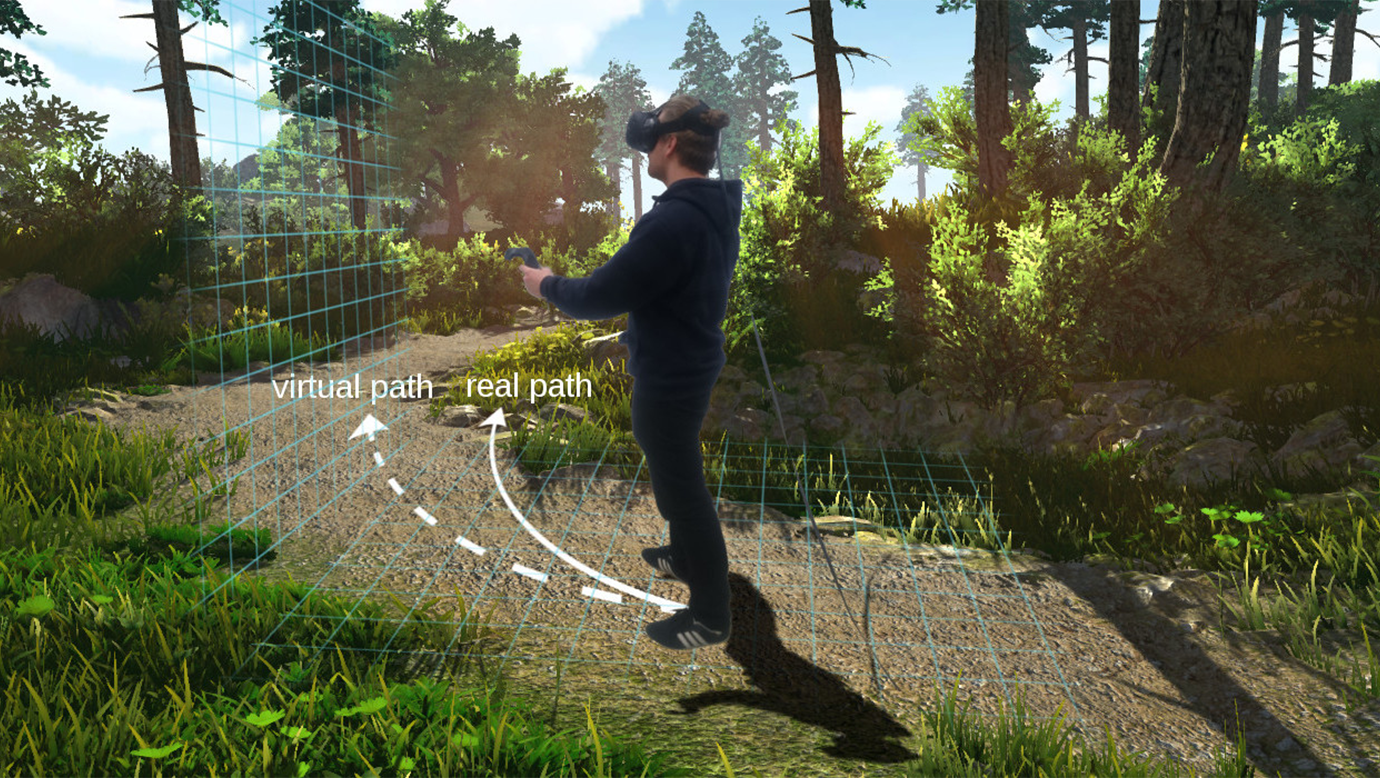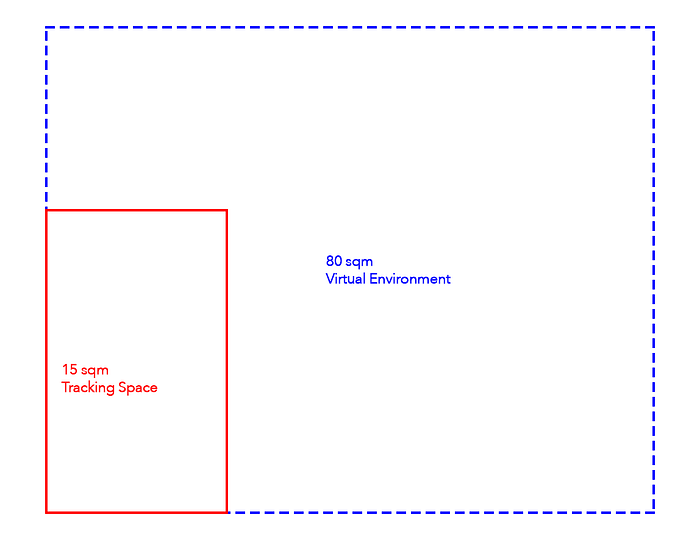The Art of Redirected Walking in Virtual Reality
How to guide players in VR to create larger room experiences.
by Dennis Briddigkeit | July 16, 2021

“With appropriate programming such a display could literally be the Wonderland into which Alice walked.“ In this quote from the 1962’s essay “The Ultimate Display”, Ivan Sutherland predicts the current VR developments. He even goes a little further and tells us that he envisions a programmed room where you can sit on virtual chairs and virtual bullets “are fatal” — but let’s focus on the walking-part for a moment.
Sutherland was a pioneer of computer graphics. In his PhD thesis, which he wrote in 1963 at the MIT, he developed Sketchpad — widely seen as one of the first interactive graphic user interface. Not only this, he also envisioned and developed the first virtual reality system which looks straight out of a 90’s grunge music video. Nevertheless, he made an interesting comparison: he used 1865’s “Alice in Wonderland” by Lewis Carroll. The story about a girl who walked into the rabbit hole. A metaphor widely used, also by The Matrix, where Trinity tells Neo to follow the white rabbit. Wonderland as a metaphor for a fantastic world, where anything can happen.
Locomotion is one of the big achievements of this fantastic world called VR. It makes it stand out from other experiences like 360° (images, movies et.). It is also one of the most problematic issues with VR — at least with current methods of locomotion. If you have ever put on a headset and experienced VR, chances are that you moved through a) teleportation or b) by using a joystick on a gamepad.
Both methods have their problems. The movement via gamepad is a direct trigger for motion sickness because your eyes tell you that you are moving, but your body tells you: “No movement detected”. This is what causes sickness, dizziness etc. A great deal of the population has these problems. And it immediately ruins the experience (at least for some).
Moving through teleportation does not cause motion sickness, but it too, has issues. If the creator of VR experience intends the user to go through a dark spooky hallway, she wants him to be scared. If she can just teleport to the end of the hallway, the effect is gone. It also often comes with effects like a loss of presence and orientation. You need a moment to reorient yourself. Time that’s spent not on the game while IN the game is bad.
The best (and most natural) way of moving is by using our own legs. And luckily, this is possible — either through external sensors with infrared or inside-out-tracking via camera. But the biggest limitation until now is the actual physical tracking space. If you are experiencing a VR game in your 4x4 m living room, the available space for moving through the virtual environment is simply 4 m x 4 m = 16 sqm. That’s without any furniture etc.
So how do we solve the problem of the room limiting the virtual experience?
Redirected Walking (RDW) is a collective term for several techniques and algorithms that are being developed — mostly in a scientific environment — to solve this problem. To enable natural walking as the primary way of locomotion, without the limitations of the available physical tracking space. This is achieved by slightly manipulating the virtual environment around the player — without the player noticing it. Like increasing a rotation by 1.5: So when the player does a physical 5° rotation in the real life, the virtual environment does a 7,5° rotation. This can be used to “guide” the player in a certain direction while walking into a different direction in real life.

The possibilities of Redirected Walking: turn 15 sqm tracking space into a 80 sqm virtual environment.
In its most extreme way, the virtual environment would guide the player in a circle, but in the virtual environment the user would have the impression that he could walk in a straight line. To reach this with the current state of the art technology, a tracking area of ~40 sqm would be necessary. But we at Curvature Games do reach an 80 sqm virtual environment with just 15 sqm of tracking space — see image above. That’s a factor of more than 5!
This, in turn, helps us solve a lot of different problems:
- Increased accessibility: the user does not have to learn how to use a gamepad or any other mechanics for locomotion. This decreases the “preparation time” drastically.
- Significantly less motion sickness, by avoiding unnatural movements or “conflicts” between visual and sense of balance by only using natural walking.
- The possibility of larger & more complex virtual room experience with …
- less physical space needed (which means more customers per space-unit for e.g. VR arcades) etc.
Now add hand-tracking to this — what we are doing in our games — and you don’t need to learn any controls at all. All actions (moving, taking, pushing, moving, pulling etc.) can be done intuitively — especially for non gamers, just with your hands and feet. By using RDW, we can create better, more immersive virtual experiences which really extend the reality.


